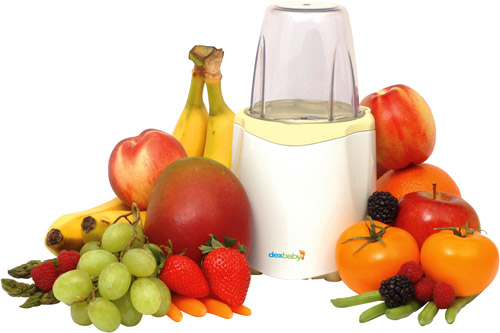 My three year old seems to be developing new food aversions by the day. As a mom, I’m trying to figure out ways to make healthy food fun for her, or perhaps even sneak a bit of veggies or extra fruit into her meals without her knowledge! As a child, my parents introduced me to foods of multiple cultures and ethnic backgrounds. I want to provide the same experience for my child, but she is beginning to voice her own opinion more (a good thing), and with that comes the typical ‘I don’t like that!’ (not such a good thing). In search of ways to help my toddler become more open-minded towards healthful cuisine, I found some interesting tips and techniques that I would like to share.
My three year old seems to be developing new food aversions by the day. As a mom, I’m trying to figure out ways to make healthy food fun for her, or perhaps even sneak a bit of veggies or extra fruit into her meals without her knowledge! As a child, my parents introduced me to foods of multiple cultures and ethnic backgrounds. I want to provide the same experience for my child, but she is beginning to voice her own opinion more (a good thing), and with that comes the typical ‘I don’t like that!’ (not such a good thing). In search of ways to help my toddler become more open-minded towards healthful cuisine, I found some interesting tips and techniques that I would like to share.
A few tips for Moms
Determine ‘why’ your child dislikes a specific kind of food.
1. Does he or she have an aversion to certain types of texture?
2. Does he or she have an aversion to a specific flavor or spice?
3. Is he or she afraid to try something new?
4. Does he or she enjoy the food unknowingly with other flavors present?
Knowing what the ‘aversion’ is will actually help you to re-create the same food in a more appealing light. Below are a few specific techniques to recreate the dish that your child dislikes.
1. If your child dislikes nuts, but you want to include some healthy omega 3’s in his or her diet, simply pulse walnuts in a food processor until they reach a flour-like consistency. Then mix your nut puree into the dry ingredients of your favorite recipe. They can replace some of the ‘bad fat’ in a cake, muffins or even dessert bread.
2. Puree, Puree, Puree! Pulse those veggies down in a food processor until your little one has no idea that your pasta sauce has pureed zucchini, broccoli and red peppers within it! Just be sure that you cook your veggies before you puree them. They are much smoother that way. You could even grill the vegetables to add some extra flavor before you puree. Or puree a banana and some berries to add moisture and fiber to your muffin mix.
3. Sub ¼ canola oil for the typical amount of butter you use in a muffin batch.
4. Substituting whole wheat flour can be a bit rough in texture for the typical young palate. Try whole wheat pastry flour instead in your cakes, breads and muffins. I like to use a 1:1 ratio of whole wheat pastry flour to white flour. This adds fiber and nutrients to your baked goods without weighing it down, as whole wheat flour tends to do.
5. Take your little one to a farmers market. Make selecting veggies and fruits fun! They can even pick a few out and tell you what they enjoy eating!
6. Pick pumpkins at a local pumpkin patch in the fall or go strawberry picking at a local farm midsummer. Don’t just make healthy foods accessible on your table, but show where they come from as well.
